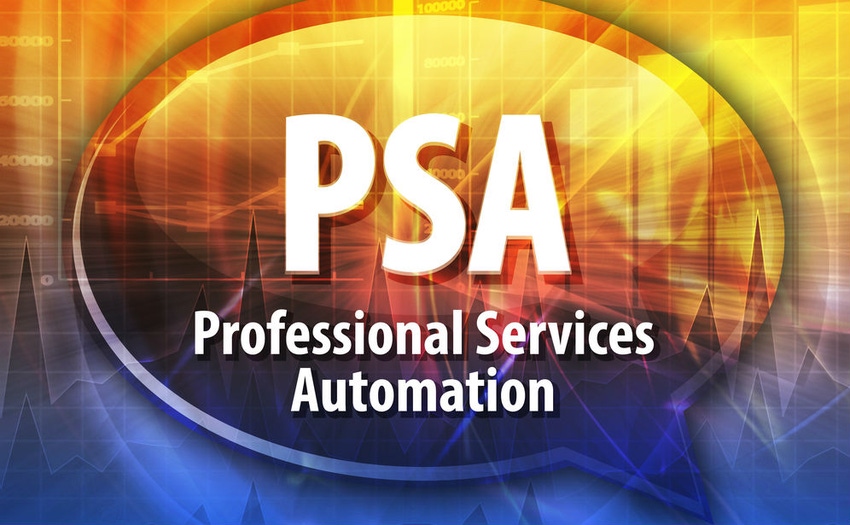Which PSA tool an MSP chooses can speed integration, increase automation and up its reliability.
April 16, 2019

By Craig Donovan

Craig Donovan
By Craig Donovan, VP of Partner Solutions, Pax8
One top trend at last week’s Channel Partners Conference & Expo was convergence: MSPs are providing products, like SIP services, once sold mostly by agents, while agents are recognizing the benefits of launching their own managed services.
After selecting which managed services make sense for customers, the most important decision facing a new MSP is the choice of a professional services automation, or PSA, tool.
PSA suites typically include in one dashboard tools for scheduling, project and documentation management, tracking the work your sales pros and technicians are performing, generating quotes and invoices, financial reporting and other elements of customer relationship management. In my opinion, a PSA comes before RMM (remote monitoring and management) for emerging MSPs, though if you have an RMM vendor preference, that will play into your choice.
So when should you start using a PSA? How do you choose the appropriate one for you? Here is my list of five key things to consider:
1. Analytics: As the MSP, you are responsible for an extremely complex ecosystem. You have to keep an eye on your services, financial information, the performance of your technicians, as well as your next opportunity.
Adopting a PSA tool is a powerful way to bring all of these components under one platform. PSA tools are designed around dashboards and reports that bring you cross-domain analytics. From the same platform you will be able to view open service tickets, all invoices sent and received, as well as the sales pipeline. Many MSP owners begin their day with a cup of coffee and a review of their PSA dashboards.
2. Automation: In any business, people are your most expensive asset. The old adage of ‘time is money’ is never more true than within the MSP. Everyone has more work than they can get to, so it’s paramount to ensure that you are working on the most critical items. Additionally, MSP technicians face high rates of burnout and turnover.
Automation is really what PSA tools are built for, and that’s what the ‘A’ stands for! When you use a PSA tool to automate tasks around ticket and time tracking, invoicing, or communications; you’re freeing up resources to work on more important items. Not only does this make you more efficient, but it also has the potential to improve employee morale. You have removed many of the tedious tasks that create burnout while freeing up time for a technician to work on more meaningful, interesting tasks.
3. Reliability: As an MSP, your key value is reliability. Can your customers trust that your services work, and that if there are problems, they will be resolved? Most PSA tools provide out-of-the-box integrations with an RMM (remote monitoring and management) tool. The RMM tool will monitor your deployed services and automatically create tickets within the PSA tool if there are any alerts. This allows your technicians to proactively address, and it gives you the ability to look for trends or aging tickets.
Additionally, the automated invoicing system ensures that bills are sent on a regular cadence. Customers who receive bills in a predictable fashion are more inclined to trust that services will be provided reliably.
4. Profitability: The transactional nature of providing cloud services creates a host of new problems for the MSP, particularly when it comes to revenue and profitability. The flexibility of SaaS solutions means that customers are no longer content to wait until the end of the month to change their …
… license count. In many cases, customers are changing licenses more than 10 times a month. These leave the MSP exposed to miscalculations on prorated charges or even missed billing for an entire change.
The combination of service ticket management and billing gives the MSP a tremendous platform to review and audit invoices. Additionally, PSA tools may provide functionality to calculate proration, import billing line items, or other audit reports.
5. Integrate: A PSA tool quickly becomes the hub of the MSP’s business. While many business functions are encapsulated within the PSA, there will still be work performed with other tools. PSA tools have a number of integrations built to coordinate the flow of data throughout your ecosystem.
Integration is one of the most important criteria to consider when choosing your PSA tool. Each PSA tool will have integrations to a different set of vendors, quoting, RMM or billing tools. It’s extremely beneficial to the MSP to choose a PSA tool that integrates with their most important partners.
Don’t let tools uncertainty hold you back from adding new managed services.
Craig Donovan is VP of Partner Solutions for Pax8. Craig drives the strategic direction of the company’s partner-focused software projects. With more than 18 years of experience in both engineering and leadership within software teams, he works with partners to understand their needs and incorporates that into the engineering cycle and provisioning. Throughout his career, Craig’s passion has been delivering solutions that exceed the customer’s needs with innovative technology. Follow Craig on LinkedIn or @Pax8 on Twitter.
You May Also Like
